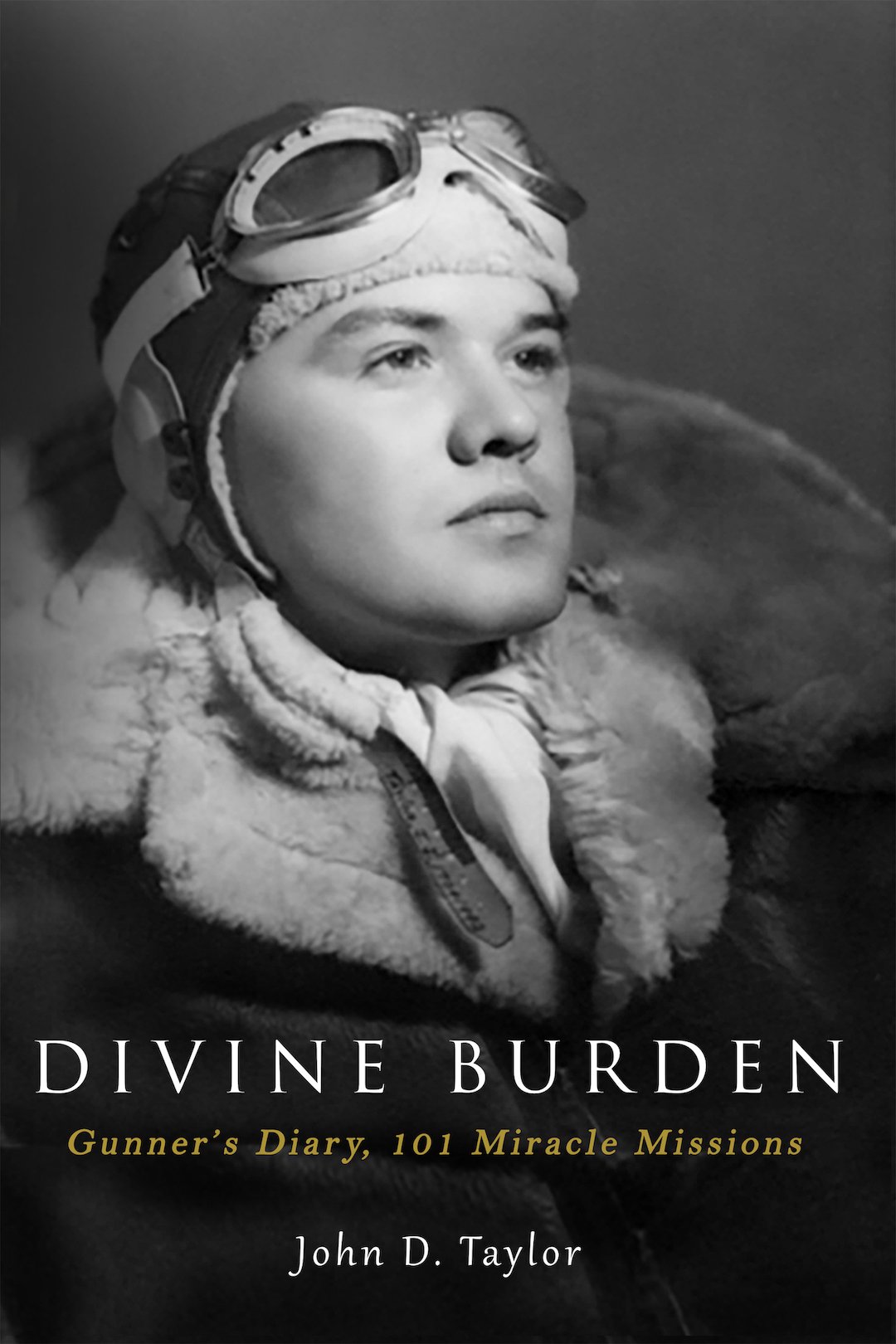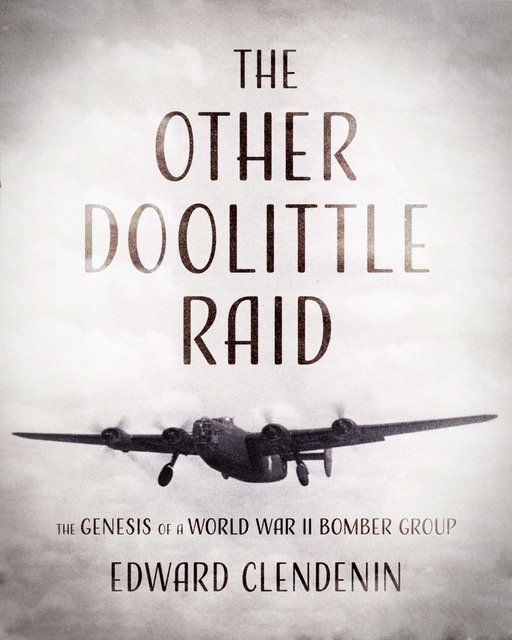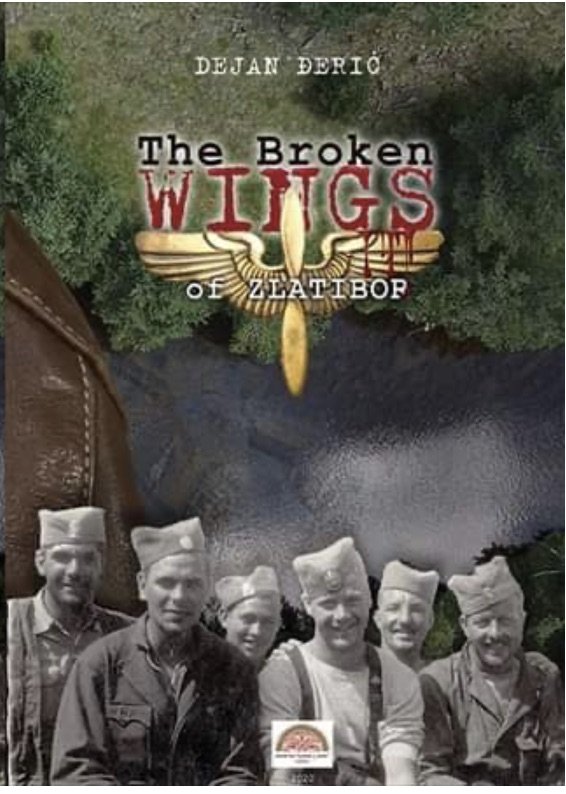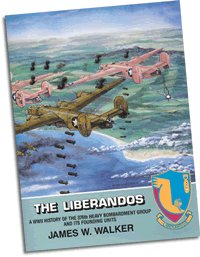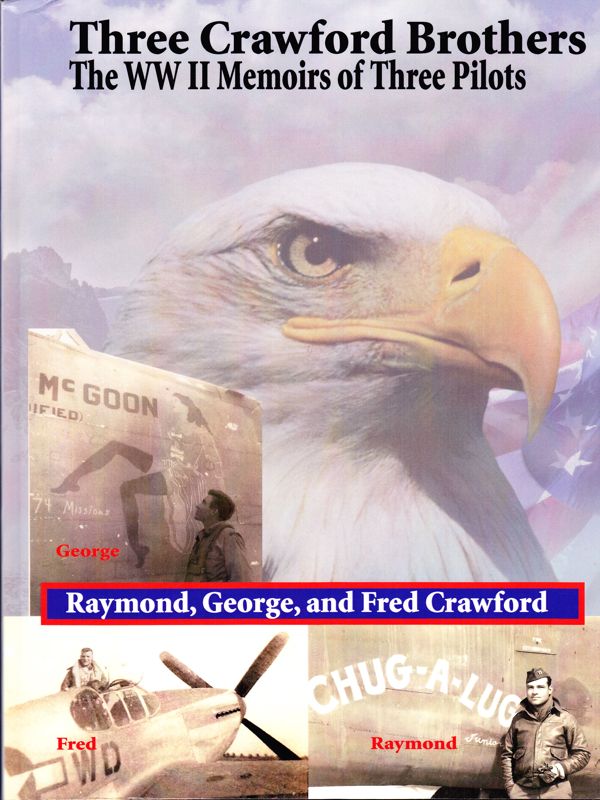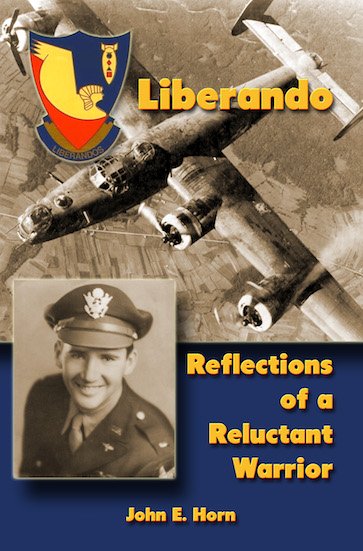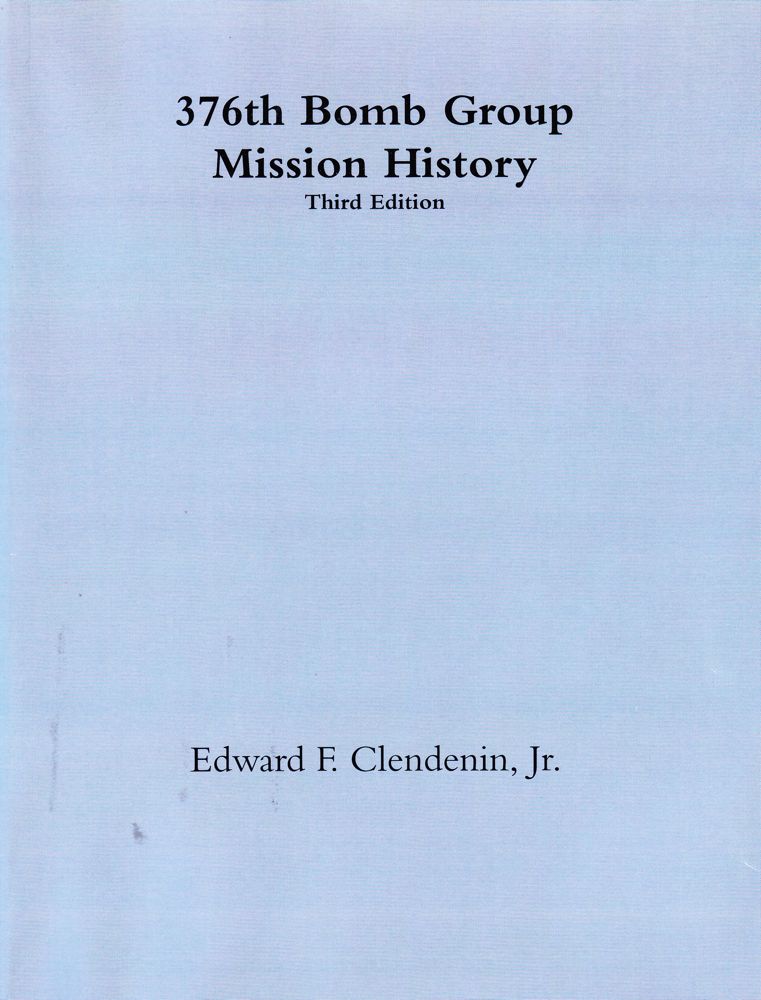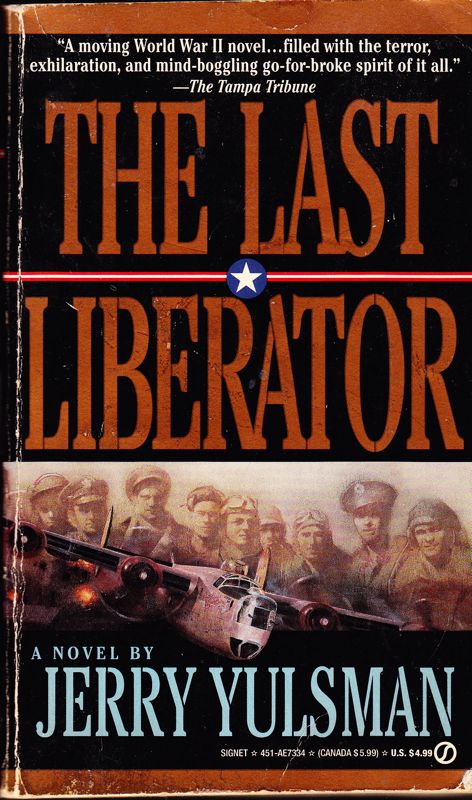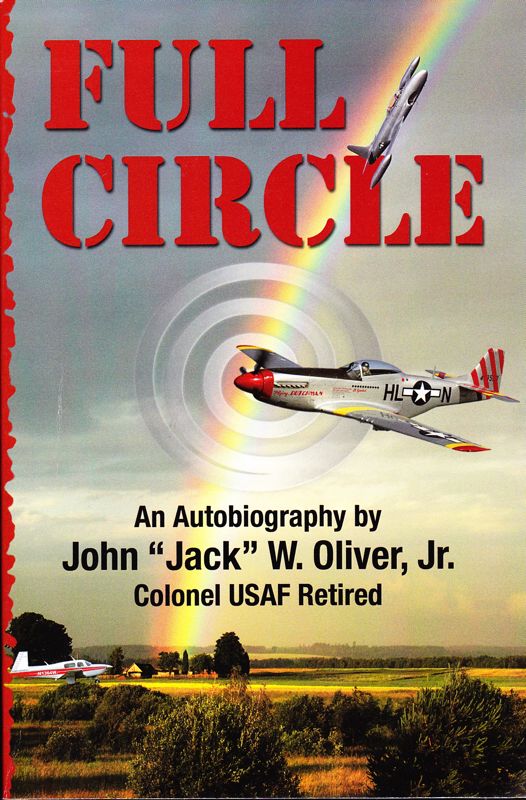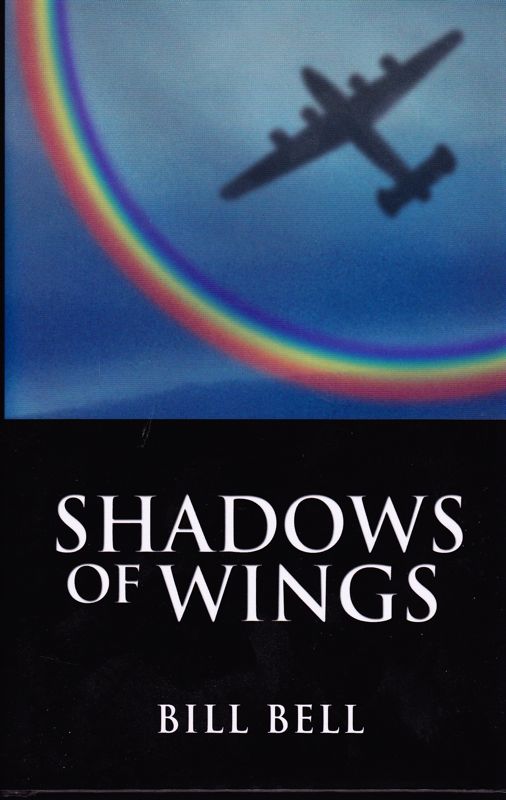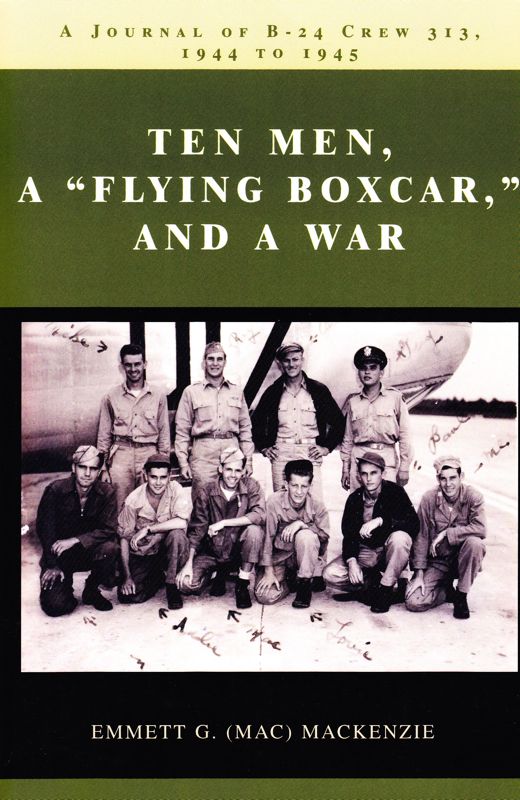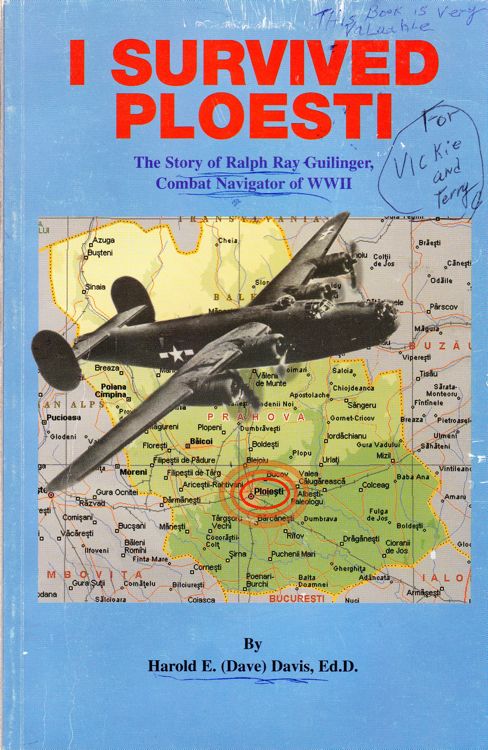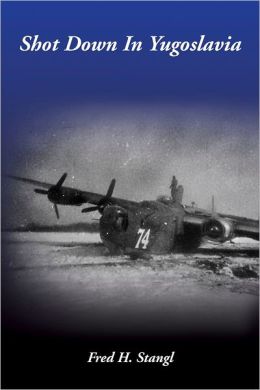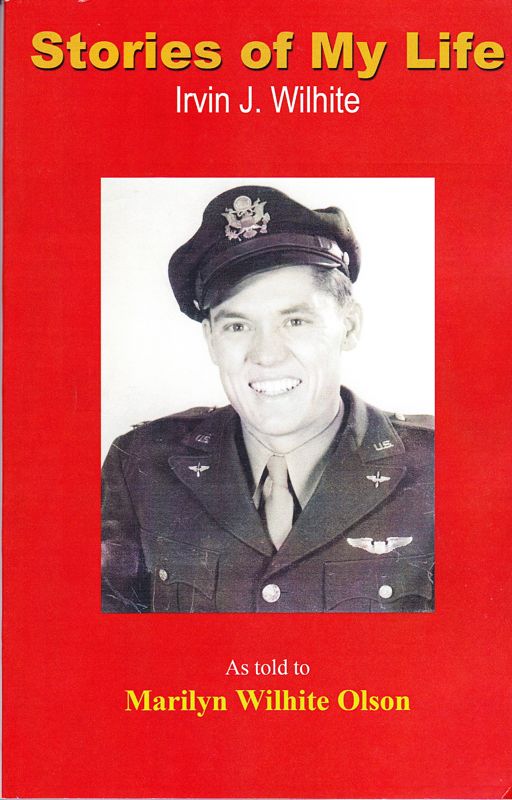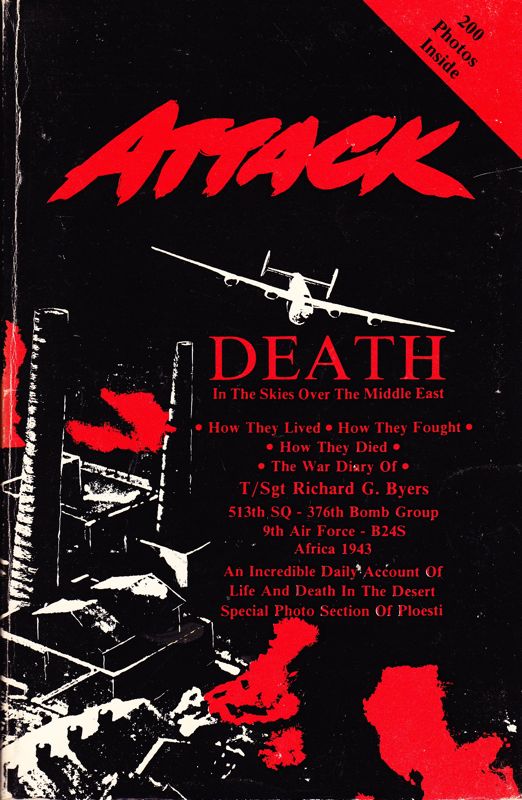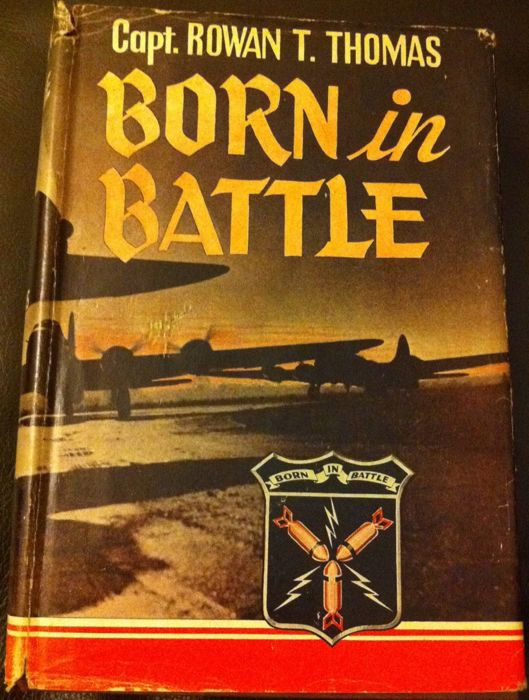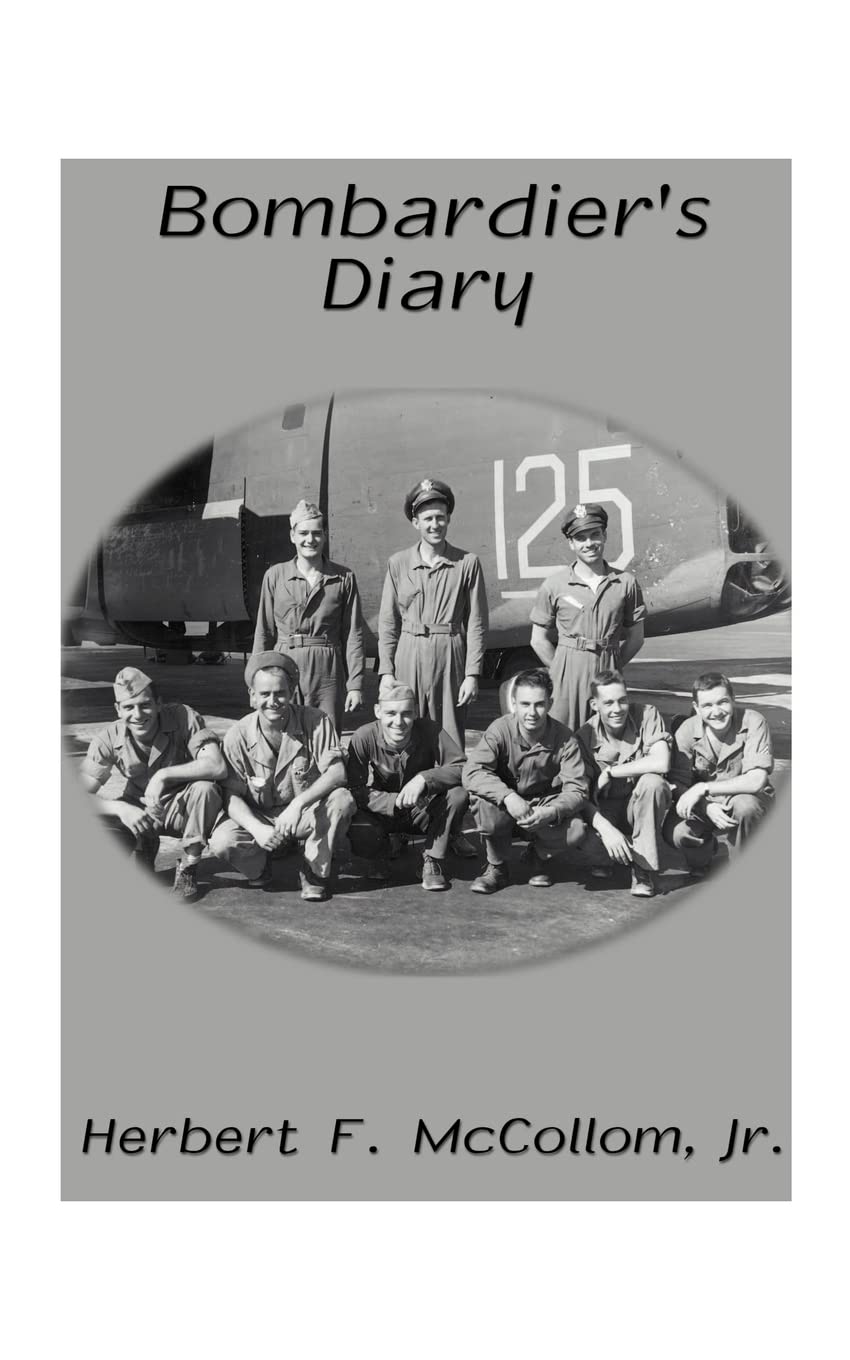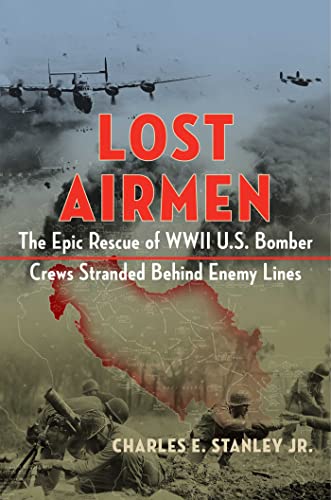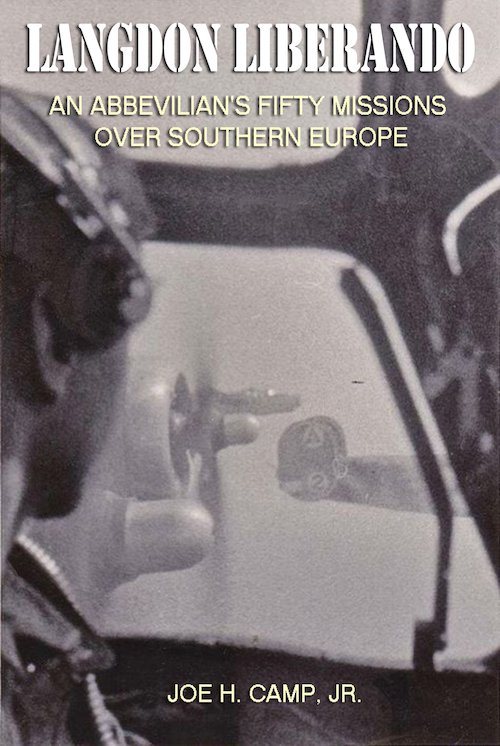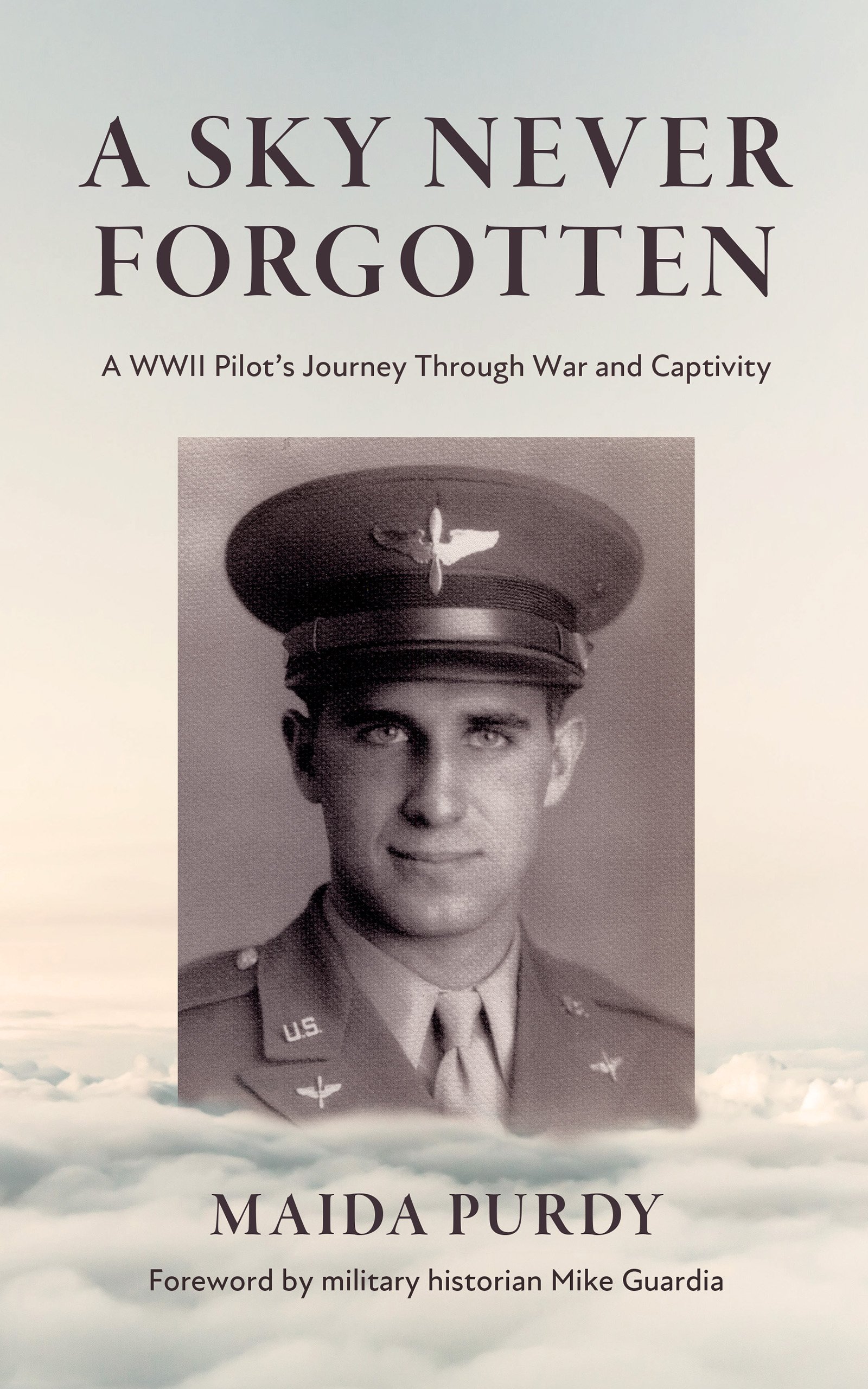Daniel P. Rice
Daniel Rice was the pilot whose crew accepted delivery of the new B-24,
ferried her overseas, and delivered her to the 376th HBG. She was the Strawberry Bitch.
Mr. Rice, his crew, and the plane were all assigned to the 512th Squadron. He flew 24 missions before he was shot down December 19, 1943 on a mission over Augsburg, Germany. He spent 16 months in a German POW camp - Stalag Luft 1.
Dan kept a diary/ flight log of his time prior to the Dec 19 mission.
His recollections of his relationship with her was published in The Friends Journal, Vol. 27, No. 2, Summer 2004. They are reprinted below.
The
airplane which became named the Strawberry Bitch and later was placed
on exhibit at the United States Air Force Museum was assigned to our
crew at Herington Air Force Base, Kansas, in late August, 1943. I signed
an issue ticket for it there. At that point it was merely one of many
B-24Ds off the assembly line at San Diego, distinguished from all the
rest of its model only by its serial number — at least until it had
received its coat of camouflage pink paint. At that point it became one
of a much smaller 'group.
We
took the airplane up to check it out and found everything to our
satisfaction except for one thing. As we put it through its various
trial maneuvers, I noticed that the air speed indicator registered
consistently about seven or eight miles per hour slower than it should.
(Climbing speed, cruising speed, stalling speed, landing speed, etc.) I
recall commenting to the crew after landing that "It looks like we have a
real dog".
But I was not
willing to let it rest that way. I sought out the maintenance officer
on the flight line, explained my observations to him and asked him to
check the airspeed meter for accuracy. Clearly, he didn't want to do it.
I'm sure he felt that it would be an exercise in futility. But I
persisted, and with all good grace, in spite of his reluctance, he
agreed to make the test. When I checked back with him later, he told me
with some wonderment that his men had replaced the instrument. Their
test procedure had shown that it registered seven miles per hour too
slow.
As the various necessary procedures preliminary to our departure were being completed,
Someone
on the crew was thinking that the airplane should have a name. I had
not given that any thought, so when our engineer, Sergeant Haberman,
came to me asking if they could name it, I agreed. When he told me the
name they had in mind, I was a little taken aback. It would not be
completely accurate to say that I "approved" their suggested name but I
did accept it, and overnight through the talent of someone, there on the
flight line, one pink B-24D number 42-72843 became the Strawberry
Bitch. That is, the name was painted on there.
The
picture of the red haired Vargas girl was not added until after we had
been in the 512th Squadron for a while. I don't remember for sure just
where that was done. It could have been at Enfidaville, Tunisia, but I
believe it more likely that the picture was added after we moved up to
San Pancrazio, Italy. We left Herington on the morning of August 28,
1943, bound for Dow Field at Bangor, Maine. On that flight, after much
close observation, I concluded that our artificial horizon was just
slightly out of level, and wrote it up on the proper form. Again, the
flight line maintenance people promptly installed a replacement
instrument.
The next
morning we were off again, bound for Gander, Newfoundland. We carried a
large brown sealed envelope with instructions to not open it until after
we were airborne. After we had gotten lined out on course, I opened it
and found Operations Orders Number 398 directing crew number 34-4, whose
pilot I was, to proceed by air in B-24D number 42-72843 to Cairo,
Egypt, and report to the Ninth Air Force for further assignment and
duty. Two other crews from the Bridges Provisional Group were included
in the same order, those of Lieutenant John M. Repp and Lieutenant
William Metzger, Jr. I paid close attention to the new artificial
horizon on that flight and found it satisfactory.
At about 08:45 PM local time on August 30, we left Gander for the flight across the North Atlantic to Prestwick, Scotland.
Most
of that ten hours and twenty minutes was about as dull and boring as it
can get. For the most part we were between cloud layers, so we could
not have seen the ocean even if there had been something down there to
look at or any light to see it.
Our
navigator couldn't see the stars to check our position by celestial
observations, so we just sat there and kept the compass on his dead
reckoning headings. It was almost like spending ten hours straight in a
Link Trainer. I did have one small diversion though. After a little
while I had the feeling that we were flying in a shallow bank to the
left. Our instruments said we were OK, but I couldn't help remembering
that just two days ago I had an artificial horizon, which was not quite
accurate. Could I trust this one? Should I?
That
question was answered in favor of training over "feeling" and it turned
out that instruments were indeed a more reliable indicator of attitude
than the "seat of the pants". We made landfall just where we were
supposed to, or at least within reasonable distance, and all was well.
I
suppose that we would have been moved on out on the next leg of our
trip the next day except for the weather. As the day began, a solid
overcast hung low over the field, and nothing was moving. I think it
would be accurate to say that the field was closed except for
emergencies. We kept an ear tuned and an eye peeled for another pink
B-24D, serial number 42-72844, with Bill Metzger and his crew who were
traveling with us but who had been held over at Gander. We watched in
vain as his expected ETA came and went. The only airplane that came in
was a C-54, which rolled to a dead stop on the runway and stayed there.
It was rumored that he didn't have enough fuel left to taxi in, and also
that two very high-ranking Air Force generals were aboard. I can
neither confirm nor deny the rumor.
It
turned out later that Metzger and his crew had been up there somewhere
in that soup but were not allowed to land. He was diverted to a small
grass field somewhere in the general area, where the airplane was
lightened so he could get it back in the air to come on to Prestwick
when the weather would permit landing there. Of course the things
removed from the airplane had to be brought on to Prestwick by some
other means so it could all be reassembled for the continuation of their
journey.
The next
morning, September 2, we were off to St Mawgen, in Cornwall, which would
be the jumping off place for the second long over-water leg on our way
to Africa. Here there was another hitch. It was discovered that gasoline
been dribbling down over the exhaust pipe of our number one engine, so
it was determined that we should be sent to a B-24 repair depot at
Watton, northeast of London to get it fixed. There they found a fuel
leak in the auxiliary wing tip tank system, and corrected it. Then on
September 6, we went back to St Mawgen. Another bug had to be worked
out.
That same day we
took off for Africa a little while before midnight, and landed at
Marrakech about ten hours later. For some reason we were allowed only a
very short rest and then were told to move on, even though we had been
in the air about 12.5 hours out of the last 24. We chose a fairly short
hop (4:40) to Algiers, and rested there a couple of days.
We
made one more stop, at Tripoli, before arriving at Cairo on September
11. There we received new orders, to report to Devesoir, which was
located on the west bank of the Great Bitter Lake, for the airplane to
be made ready for combat and then on (or back) to Berka Two at Benghazi,
Libya. There we would join the 376th Bomb Group. We checked in there on
September 16, and were further assigned to the 512th Squadron. The
Strawberry Bitch was now poised to begin to fulfill its purpose, that of
combat operations against the enemy.
My
crew did not have the Bitch on any of the airplane’s first three
missions. It was assigned to different squadron "old- timers" who had
the privilege of breaking in new airplanes, and I was sent out as
co-pilot with others who had the dubious honor of breaking in new
pilots. Others of the crew were also given temporary "one-mission
assignments during this break-in period. We finally were put back
together for my fourth mission but with a different airplane.
It
was the Bitch's fourth mission — my fifth — before we were all back
together again in "our" airplane. We took off from Benina Plain at
Benghazi to bomb Tatoi Airdrome near Athens which was being used by the
Germans in their fight with the British over some islands in the eastern
Mediterranean. We landed back at Berka Two.
I
think we caught them by surprise, for there was no fighter opposition
at all and no effective antiaircraft fire. I don't remember any at all.
The next day we were back in the Athens area again for the same purpose,
this time at Eleusis Airdrome. The German fighters were ready for us.
The "tail end Charlie" element at the extreme right rear corner of the
formation took quite a beating as the fighters came at us from the rear.
We were in the left wing position of that element and saw both the
right wing and the lead ships catch fire and go down. We took a lot of
hits ourselves, including 20mm cannon shell bursts in our main wing fuel
tanks, but did not catch fire. Our top gunner (engineer) was injured
about the left side of his face and head by fragments from the shell
burst and holed Plexiglas, but fortunately the wounds were not deep nor
life threatening. After a short healing period he was back in the
harness and pulling his share of the load again. I don't suppose I ever
did know the full extent of the damage absorbed by the airplane that
day. Most of those details have long since dissolved in the mists of
time anyway. But I do remember the three or four — possibly more — holes
in the top of our wing and fuel tanks through which I could look in and
see the gasoline gently sloshing back and forth as the airplane was
slightly rocked by our movement on it. If I had a coffee cup, I could
have reached in through the holes and dipped out the fuel. In
retrospect, it seems to me that as I was watching both of my element
mates go down in flames, that was the quintessential time and place for
the expression: "There but for the grace of God go I." I certainly am at
a loss for any other explanation of why they went down and we did not.
I
remember too the good sized jagged hole in the left vertical stabilizer
at or just above its attachment point to the horizontal tail surface
where other explosive shells had found us. And at least one
non-explosive one found us too. Curiously, it had entered the trailing
edge of our left wing exactly in the center of the seam created by the
riveting of two sheets of aluminum skin together. It had traveled
forward through the wing and out through the de-icing boot on the
leading edge. Then, there was a pronounced dimple in the center of one
of our propeller blades, which it had hit after exiting the wing.
As
we had approached the base, we could not establish contact with the
tower, and once on the ground it was easy to understand why. All of our
antennas had been shot away. That in itself was no big deal, but I think
it serves to indicate the amount of bullets and shell fragments which
had been, flying about the airplane.
So
the Strawberry Bitch's fifth mission was sort of a rough one for it.
That was more damage than our squadron ground crews were prepared to
handle, so the airplane was transferred to a maintenance squadron for
repair. It did not return to duty until November when my crew had it on
the 10th and 11th for its 6th and 7th missions. We had it again for its
11th mission on November 29th, and Its 14th on December 15th.
The
December 15th mission was my last flight in the Strawberry Bitch. Our
target was the Avisio viaduct just south of Bolzano in northern Italy,
but the airplane couldn't quite make it. Just about the time we crossed
the northern coast of the Adriatic Sea, our number four engine started
trailing a streamer of dense black smoke, so we feathered the propeller,
dropped out of formation, and brought our bomb load back home. My
recollection is that we had blown a cylinder.
Thus
did my own personal association with the Strawberry Bitch come to an
end after about 150 hours as its pilot. About 40 of these were combat
hours, about 40 were in non-combat flights in the Mediterranean area,
about 63 were in transit from Herrington to Benghazi, and about seven
were in check-out flights at Herington.
The
association ended, that is, until I found it again at the Air Force
Museum in the spring of 1975. With the gracious permission of museum
personnel I have enjoyed the privilege of revisiting its cockpit on four
different occasions with different members of my family. I am deeply
appreciative.
I am afraid
that this brief "overview" has long since lost the quality of brevity.
Perhaps I can rationalize this by claiming to have added some bit of
information about the airplane that is not contained in the Museum's
files on it.
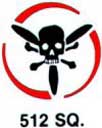
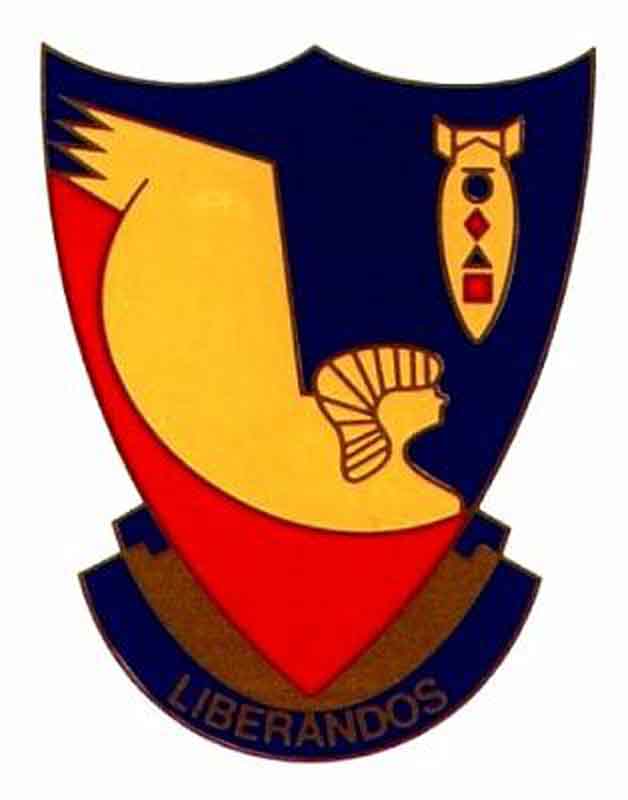
The website 376bg.org is NOT our site nor is it our endowment fund.
At the 2017 reunion, the board approved the donation of our archives to the Briscoe Center for American History, located on the University of Texas - Austin campus.
Also, the board approved a $5,000 donation to add to Ed Clendenin's $20,000 donation in the memory of his father. Together, these funds begin an endowment for the preservation of the 376 archives.
Donate directly to the 376 Endowment
To read about other endowment donation options, click here.
Reunion
NOTE change in the schedule !!
DATES: Sep 25-28, 2025
CITY:Rapid City, SD
HOTEL: Best Western Ramkota Conference Hotel; 2111 North LaCrosse St., Rapid City, SD 57702; 605-343-8500
Click here to read about the reunion details.
